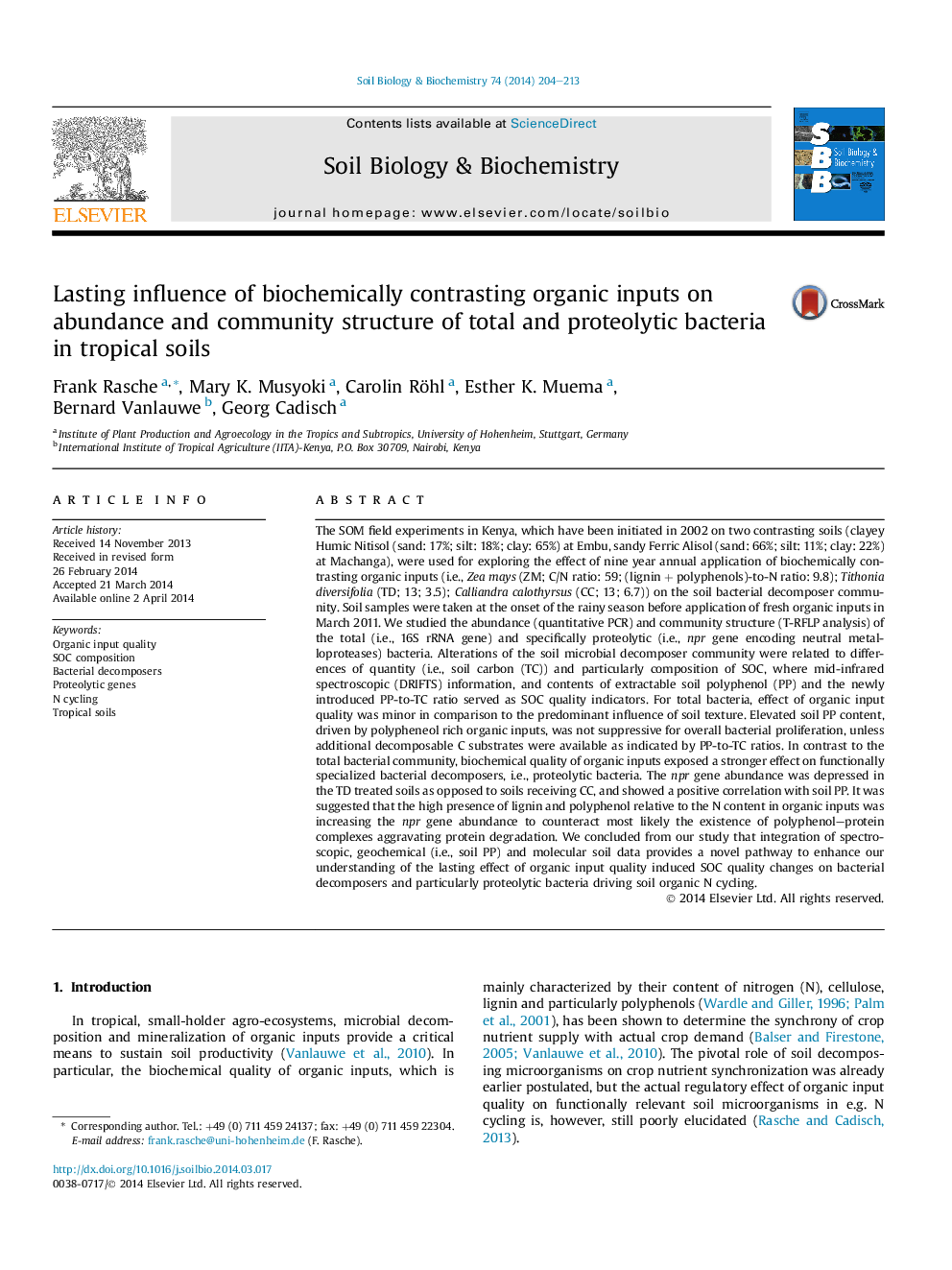| Article ID | Journal | Published Year | Pages | File Type |
|---|---|---|---|---|
| 2024629 | Soil Biology and Biochemistry | 2014 | 10 Pages |
Abstract
The SOM field experiments in Kenya, which have been initiated in 2002 on two contrasting soils (clayey Humic Nitisol (sand: 17%; silt: 18%; clay: 65%) at Embu, sandy Ferric Alisol (sand: 66%; silt: 11%; clay: 22%) at Machanga), were used for exploring the effect of nine year annual application of biochemically contrasting organic inputs (i.e., Zea mays (ZM; C/N ratio: 59; (lignin + polyphenols)-to-N ratio: 9.8); Tithonia diversifolia (TD; 13; 3.5); Calliandra calothyrsus (CC; 13; 6.7)) on the soil bacterial decomposer community. Soil samples were taken at the onset of the rainy season before application of fresh organic inputs in March 2011. We studied the abundance (quantitative PCR) and community structure (T-RFLP analysis) of the total (i.e., 16S rRNA gene) and specifically proteolytic (i.e., npr gene encoding neutral metalloproteases) bacteria. Alterations of the soil microbial decomposer community were related to differences of quantity (i.e., soil carbon (TC)) and particularly composition of SOC, where mid-infrared spectroscopic (DRIFTS) information, and contents of extractable soil polyphenol (PP) and the newly introduced PP-to-TC ratio served as SOC quality indicators. For total bacteria, effect of organic input quality was minor in comparison to the predominant influence of soil texture. Elevated soil PP content, driven by polypheneol rich organic inputs, was not suppressive for overall bacterial proliferation, unless additional decomposable C substrates were available as indicated by PP-to-TC ratios. In contrast to the total bacterial community, biochemical quality of organic inputs exposed a stronger effect on functionally specialized bacterial decomposers, i.e., proteolytic bacteria. The npr gene abundance was depressed in the TD treated soils as opposed to soils receiving CC, and showed a positive correlation with soil PP. It was suggested that the high presence of lignin and polyphenol relative to the N content in organic inputs was increasing the npr gene abundance to counteract most likely the existence of polyphenol-protein complexes aggravating protein degradation. We concluded from our study that integration of spectroscopic, geochemical (i.e., soil PP) and molecular soil data provides a novel pathway to enhance our understanding of the lasting effect of organic input quality induced SOC quality changes on bacterial decomposers and particularly proteolytic bacteria driving soil organic N cycling.
Keywords
Related Topics
Life Sciences
Agricultural and Biological Sciences
Soil Science
Authors
Frank Rasche, Mary K. Musyoki, Carolin Röhl, Esther K. Muema, Bernard Vanlauwe, Georg Cadisch,
